- About MAA
- Membership
- MAA Publications
- Periodicals
- Blogs
- MAA Book Series
- MAA Press (an imprint of the AMS)
- MAA Notes
- MAA Reviews
- Mathematical Communication
- Information for Libraries
- Author Resources
- Advertise with MAA
- Meetings
- Competitions
- Programs
- Communities
- MAA Sections
- SIGMAA
- MAA Connect
- Students
- MAA Awards
- Awards Booklets
- Writing Awards
- Teaching Awards
- Service Awards
- Research Awards
- Lecture Awards
- Putnam Competition Individual and Team Winners
- D. E. Shaw Group AMC 8 Awards & Certificates
- Maryam Mirzakhani AMC 10 A Awards & Certificates
- Two Sigma AMC 10 B Awards & Certificates
- Jane Street AMC 12 A Awards & Certificates
- Akamai AMC 12 B Awards & Certificates
- High School Teachers
- News
You are here
Who's That Mathematician? Paul R. Halmos Collection - Page 19
For more information about Paul R. Halmos (1916-2006) and about the Paul R. Halmos Photograph Collection, please see the introduction to this article on page 1. A new page featuring six photographs will be posted at the start of each week during 2012.
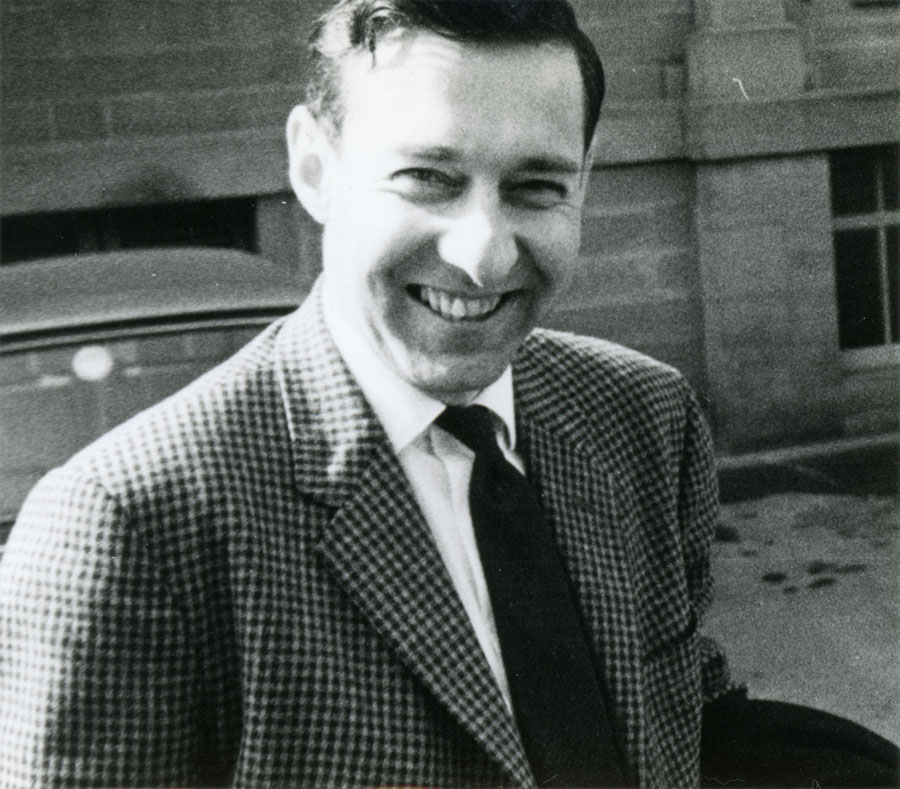
Halmos photographed group theorist James Alexander “Sandy” Green (1926-2014) at the British Mathematical Colloquium in Dundee, Scotland, in April of 1965. At this BMC, Halmos gave a plenary lecture on “Some recent progress in Hilbert space” and Green a morning lecture on “Symmetric Functions and Group Representations.” At the time, Green was finishing up the second of two years at the University of Sussex in Brighton, England, and had accepted an appointment to the mathematics faculty at the brand-new University of Warwick in Coventry, England, where he would spend the rest of his career. Green earned his Ph.D. from Cambridge in 1951, with the dissertation “Abstract Algebra and Semigroups,” written under Philip Hall, and, by 1955, had shifted his focus to representation and character theory. He advised at least two Ph.D. students, including Bhama Srinivasan in 1960, at the University of Manchester, England, where he was on the faculty from 1950 to 1963. He then advised at least 21 more students at the University of Warwick from 1968 to 1992. Green is now Emeritus Professor of Mathematics at Warwick and a Fellow of the Royal Society. (Sources: Mathematics Genealogy Project; MacTutor Archive, including Biographies and BMC Programs)
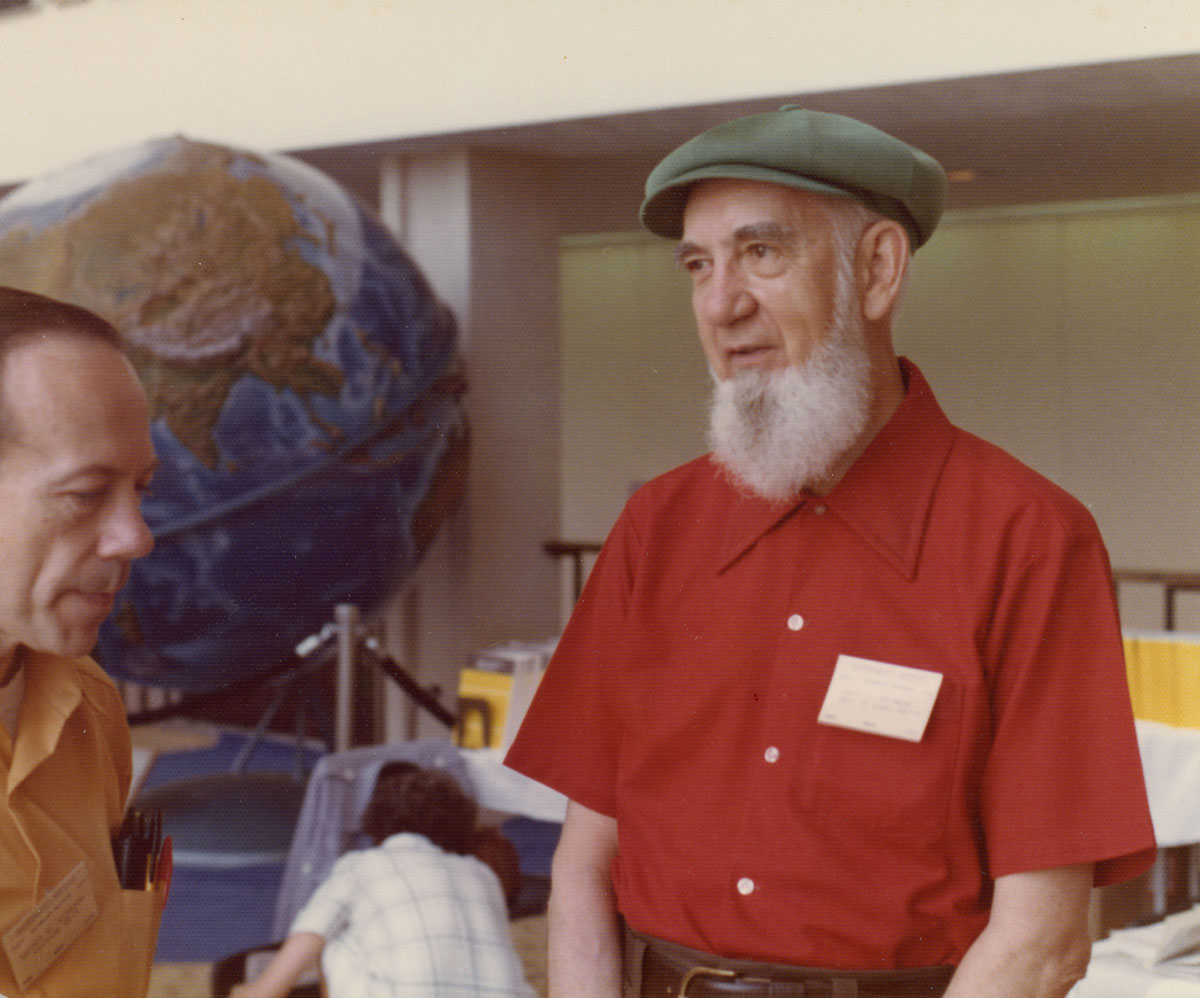
Andrew Gleason (1921-2008) and Robert Greenwood (1911-1993) were photographed at the AMS Summer Meeting at Western Michigan University in Kalamazoo, Michigan, in August of 1975.
Two more photographs of Gleason appear on page 17 of this collection, where you can read more about him.
Greenwood earned his Ph.D. from Princeton University in 1939 with a dissertation on “Hankel series,” written under Salomon Bochner. Born in Texas and educated as an undergraduate (in physics) at the University of Texas at Austin, he returned to UT Austin to join the mathematics faculty there in 1938, leaving only to serve in the U.S. Navy during World War II (1942-46) and during the Korean Conflict (1950-52). Many years later, he retired from the U.S. Naval Reserve as a Lieutenant Commander. Throughout his university career, Greenwood took on summer consulting positions and reservist duties in which he applied mathematics to real-world problems. At UT Austin, Greenwood was known as an excellent teacher and lecturer with primary interest in numerical analysis, but also probability and cryptography. He retired in 1981 and remained active as Professor Emeritus until his death. (Sources: Mathematics Genealogy Project, UT Austin Memorial)
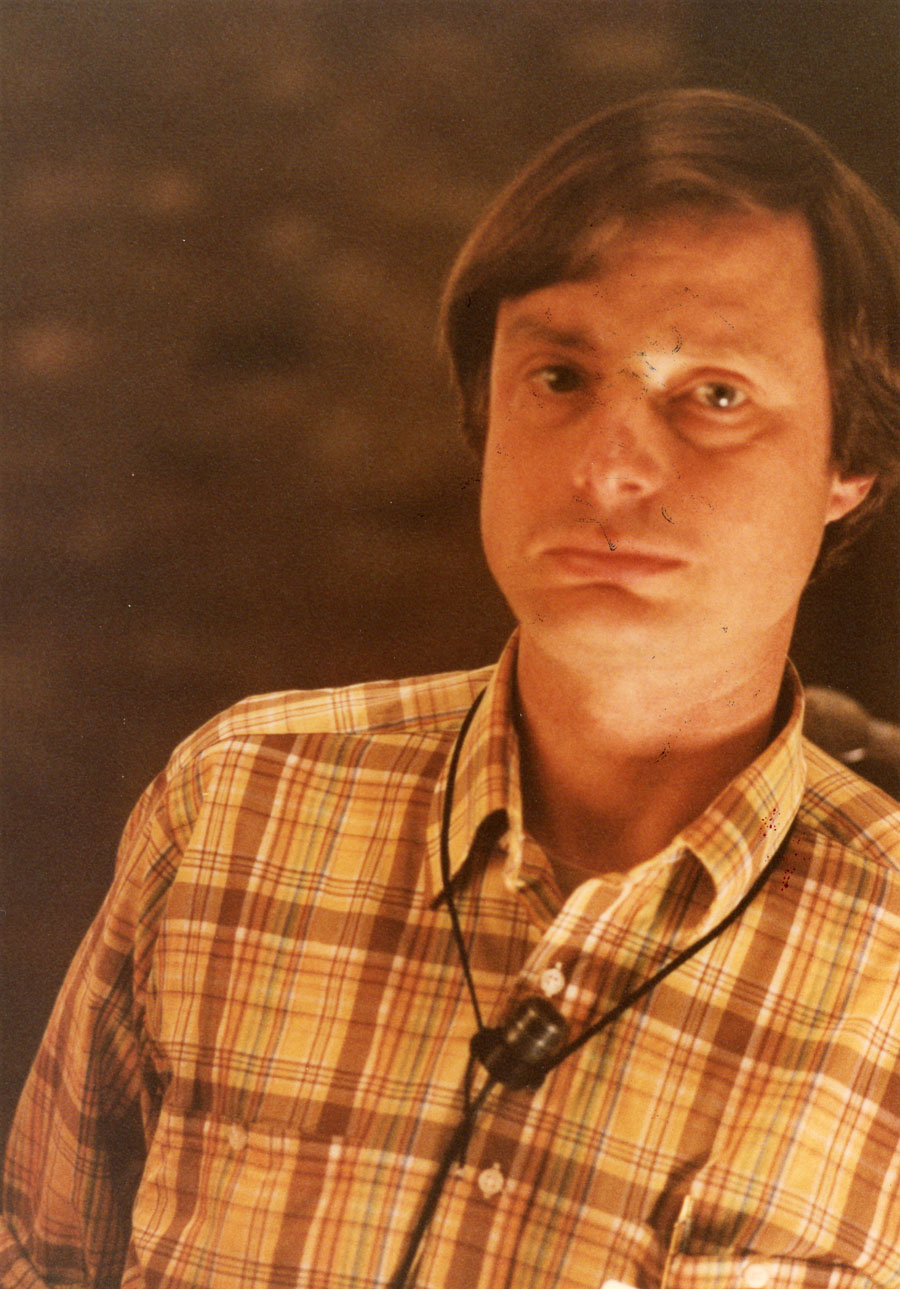
Halmos photographed Phillip Griffiths in Bloomington, Indiana, in April of 1980. At the time this photo was taken, Griffiths was on the mathematics faculty at Harvard University and Halmos at Indiana University in Bloomington. Griffiths now is Professor Emeritus of Mathematics at the Institute for Advanced Study (IAS) in Princeton, New Jersey, where he served as Director from 1991 to 2003 and as Professor of Mathematics from 2004 to 2009. Before joining IAS as a faculty member, he visited IAS during 1968-70 and 1981-82. Griffiths earned his Ph.D. from Princeton in 1962 with the dissertation, “On certain homogeneous complex manifolds,” and then served on the faculties of the University of California, Berkeley (1962-67), Princeton University (1967-72), Harvard University (1972-83), and Duke University (1983-91), where he also was University Provost. He advised at least nine Ph.D. students at UC Berkeley, at least ten at Harvard, and at least nine at Princeton, the latter during both 1971-73 and 1997-2004. (Sources: Mathematics Genealogy Project, MacTutor Archive, Institute for Advanced Study)
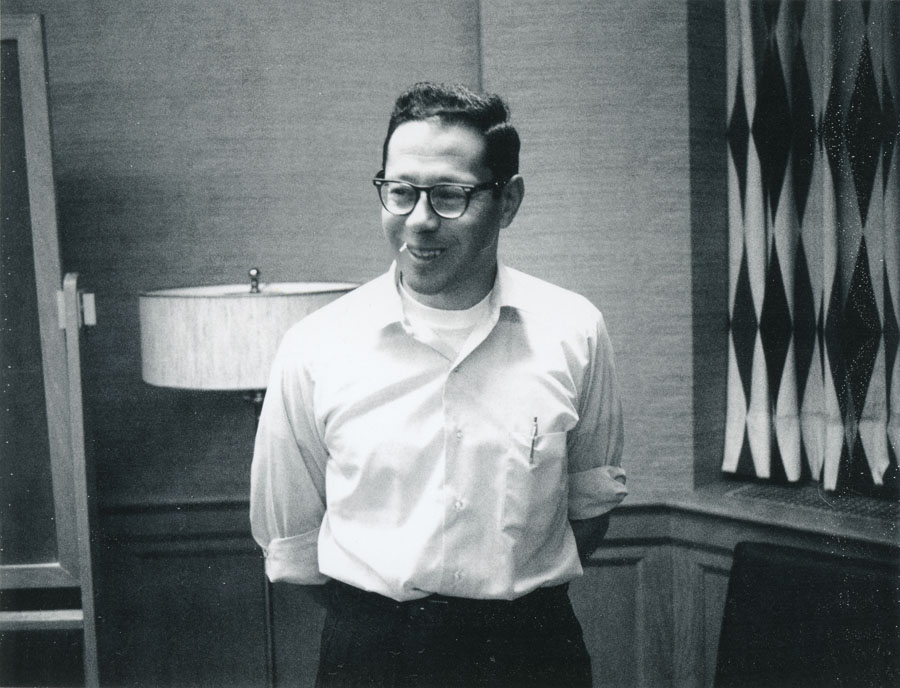
Leonard Gross was photographed by Halmos in Bloomington, Indiana, on December 8, 1972. Gross received his Ph.D. from the University of Chicago in 1958 with the dissertation, “Integration and non-linear transformations of Hilbert space,” written under Irving Segal. Halmos was on the University of Chicago faculty from 1946 to 1961, and Gross confirms that he and Halmos first met when Gross was a graduate student there. At the time this photo was taken, Halmos was a faculty member at Indiana University in Bloomington. After earning his Ph.D., Gross spent two years at Yale, then moved to Cornell University, where he has advised at least 35 Ph.D. students so far. He lists his current mathematical interests as functional analysis and constructive quantum field theory. (Sources: Mathematics Genealogy Project, Cornell University)
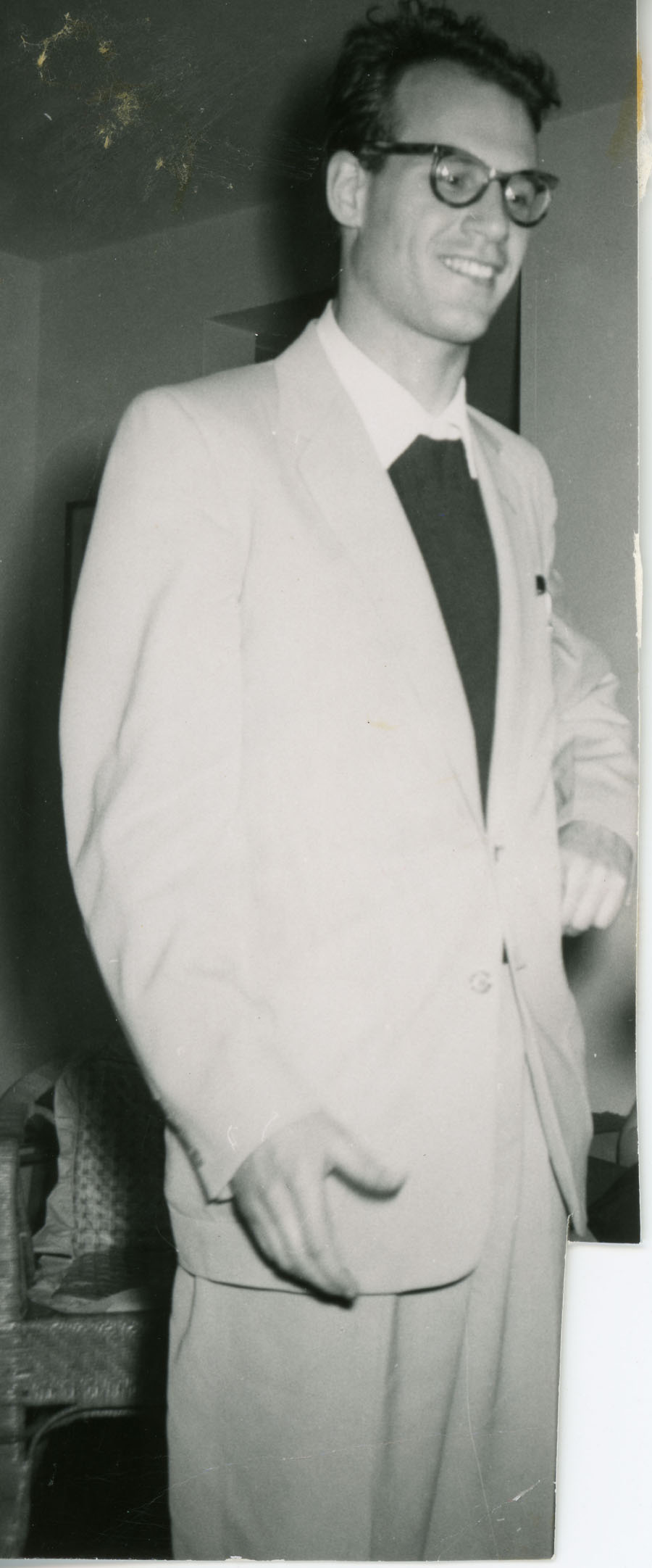
Halmos photographed Alexander Grothendieck (1928-2014) in Chicago, Illinois, probably during academic year 1955-56, which Grothendieck spent at the University of Kansas. Halmos was on the faculty at the University of Chicago at the time he took this photograph. Grothendieck earned his Ph.D. in 1953 from Université Henri Poincaré Nancy with a dissertation in functional analysis written under Laurent Schwartz and Jean Dieudonné (see page 11 of this collection for a photo of Dieudonné). He spent 1953-55 at the University of São Paulo, Brazil, and the next academic year in the United States. By the time he returned to the Centre National de la Recherche Scientifique in Paris in 1956, his research interests had shifted to topology and geometry. In 1959 he became a founding faculty member of the Hautes Études Scientifiques (IHES), where he remained until 1970. During 1959-70, Grothendieck established important results in many fields, most notably algebraic geometry, and, perhaps even more significantly, helped effect a major shift in mathematics towards generalization and abstraction. He received the Fields Medal in 1966 for advances in algebraic geometry and in homological algebra and for introducing K-theory (Grothendieck groups and rings). In 1970, Grothendieck left IHES and began to divide his time between mathematics and political activities. He seemed to leave mathematics altogether when he retired from Université Montpellier in 1988.
Grothendieck advised at least 17 Ph.D. students, most of them at at Université de Paris. Perhaps most notable among his Ph.D. students is Pierre Deligne, who spent 1965-66 in Paris, but who earned his degree from Université Libre de Bruxelles in 1968. Deligne is now Professor Emeritus at the Institute for Advanced Study in Princeton, New Jersey. (Sources: Mathematics Genealogy Project; MacTutor Archive; Fields Medallists; AMS Notices: “Comme Appelé du Néant: As If Summoned from the Void: The Life of Alexandre Grothendieck,” Part 1 and Part 2, by Allyn Jackson, Oct.-Nov. 2004; Institute for Advanced Study)
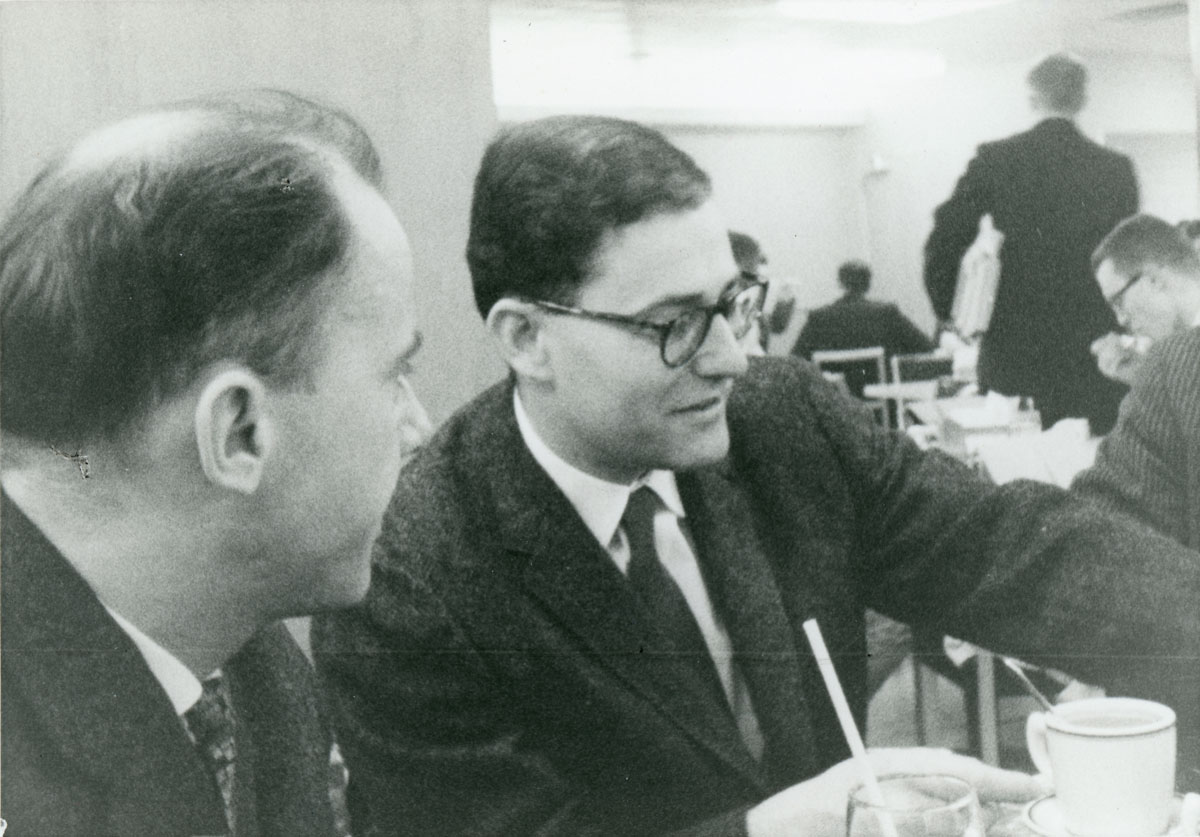
Halmos photographed Hans-Wilhelm Knobloch and Karl Gruenberg (1928-2007) in Ann Arbor, Michigan, in March of 1962. Halmos was a faculty member at the University of Michigan in Ann Arbor at that time.
Knobloch, who was a visiting faculty member at the University of Michigan from 1961 to 1963, earned his Ph.D. from Humboldt-Universität zu Berlin in 1950 with the dissertation, “Über galoissche Algebren,” written under advisor Helmut Hasse. In 1958, after publishing five papers in algebra and number theory, Knobloch published three papers, one nominally in field theory, but the other two in integral transforms and in differential equations. Judging from his publication record (including two papers on differential equations published in the Michigan Mathematics Journal in 1962 and 1963), differential equations were most likely what he worked on during his two years at Michigan. From there he moved to Aarhus University in Denmark (1963-65) and then to the Technische Universität Berlin (1965-1970). In 1970, he joined the mathematics faculty at Bayerische Julius-Maximilians-Universität Würzburg, where he has been Professor Emeritus since 1995. By the time he moved to Würzburg, he was working in control theory as well as differential equations. (Sources: Mathematics Genealogy Project, MathSciNet, Mathematisches Institut der Universität Würzburg)
Gruenberg earned his Ph.D. from Cambridge in 1954 with a dissertation on commutators of groups and associative rings written under Philip Hall. He accepted a position at Queen Mary College, University of London, in 1953 and spent his career there, retiring in 1993 but remaining active as Professor Emeritus until his death. During the 1960s, he focused on the cohomology of groups; his book Cohomological topics in group theory (Springer-Verlag, 1970) contains his work from that decade. His second book, Relation modules of finite groups (AMS, 1976), described his work from the early 1970s. (Source: MacTutor Archive)
For an introduction to this article and to the Paul R. Halmos Photograph Collection, please see page 1. Watch for a new page featuring six new photographs each week during 2012.
Regarding sources for this page: Information for which a source is not given either appeared on the reverse side of the photograph or was obtained from various sources during 2011-12 by archivist Carol Mead of the Archives of American Mathematics, Dolph Briscoe Center for American History, University of Texas, Austin.
Janet Beery (University of Redlands) and Carol Mead (Archives of American Mathematics, University of Texas, Austin), "Who's That Mathematician? Paul R. Halmos Collection - Page 19," Convergence (January 2012), DOI:10.4169/loci003801




